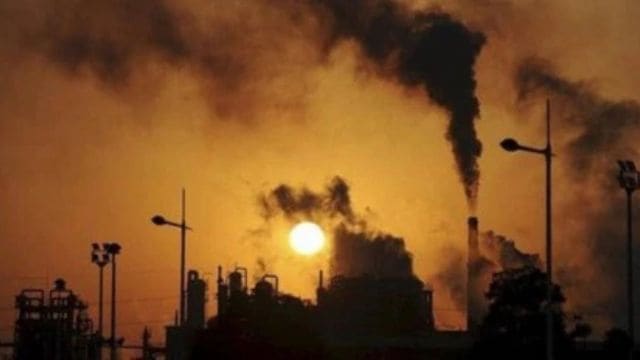Per capita energy consumption in six states far below national average: IIMA report
Per capita energy consumption is a metric for Human Development Index (HDI) for developing countries.
 he six states comprise large ones such as Uttar Pradesh and Madhya Pradesh besides smaller ones like Bihar, Chhattisgarh, Jharkhand and Assam.
(Representative image)
he six states comprise large ones such as Uttar Pradesh and Madhya Pradesh besides smaller ones like Bihar, Chhattisgarh, Jharkhand and Assam.
(Representative image)The per capita energy consumption in six states in the country as on 2019 was found to be below 6 gigajoules (GJ) per annum, far less than the national average of 21 GJ, according to a report commissioned by the office of the Principal Scientific Advisor along with the Nuclear Power Corporation of India Limited, and prepared by the Indian Institute of Management Ahmedabad (IIMA).
Per capita energy consumption is a metric for Human Development Index (HDI) for developing countries. The six states comprise large ones such as Uttar Pradesh and Madhya Pradesh besides smaller ones like Bihar, Chhattisgarh, Jharkhand and Assam.
These states, until 2019, also figured in the bottom 33 per cent of the HDI as well as its components EI (Education Index) and II (Income Index), highlighted the report titled “Synchronising energy transitions toward possible Net Zero for India: Affordable and clean energy for all”.
The objective of the report is to “bring out all aspects for the benefit of the public and policymakers and build scenarios for an energy mix that provides affordable and clean energy for all citizens living in a well developed India,” according to authors of the report.

Released in April at Vigyan Bhawan, New Delhi, earlier this year, the report further stated that “an immediate scope for moving toward high HDI and, eventually, very high HDI is to reduce the disparity between high-performing and low-performing states, increasing energy access in states that currently consume 50 per cent less per-capita energy compared to the national average.”
The analysis of 2011 and 2019 state-level data on HDI, EI, II, energy and electrification revealed, “With greater electrification in states like Bihar, Uttar Pradesh, Madhya Pradesh, Rajasthan and Assam — with high population and low energy access — there is an opportunity to improve the national HDI to 0.7 by 2025, 0.805 by 2035-40, and 0.9 by 2045-50.”
India’s current HDI is 0.645, placing it in the medium HDI group. The investigators recommend: “The most ‘bang per buck’ spent may be obtained by investing in education in Bihar, Chhattisgarh, Madhya Pradesh, Jharkhand, Odisha, Rajasthan, Uttar Pradesh and West Bengal along with several northeastern states as these are in the ‘elastic’ range of growth for education.”
IIMA Professor Amit Garg, the principal investigator for the report, told The Indian Express, “The smaller states are doing good as compared to the larger ones.”
According to Prof Garg, who is National Investment and Infrastructure Fund (NIIF) Chair in Environment, Social and Corporate Governance (ESG) at IIMA, the transition has to be “development -led”.He said, “For the next five years, (we should) focus on the states lagging behind in higher HDI, finding ways on how energy consumption can be increased.”
The report stated that lagging states must work on improving the health index (HI) while pointing out that overall national HDI may not improve by improving the HI alone.
“While the national mean number of schooling years is averaged at 6.5 years, it is as low as 4.6 years in Bihar. For females, the national mean is 5.4 years, which is 2.9 years in Bihar,” it added.The report emphasised that coal cannot be “wished away” for another 20 years in the country, noting that over 15 million people are employed in the sector and there are industries dependent on the fuel.
“The coal phase-down will require undertaking significant imports of critical minerals to fulfill the needs of renewable energy and battery storage sectors. Therefore, the mining sector is expected to face substantial challenges,” the report concluded.
For the report, the data for HDIs were obtained from the Global Data Lab’s Human Development Indices. To obtain per capita estimates, energy consumption data was divided by state population, thus baseline calculations were done for 2011 and 2019.












